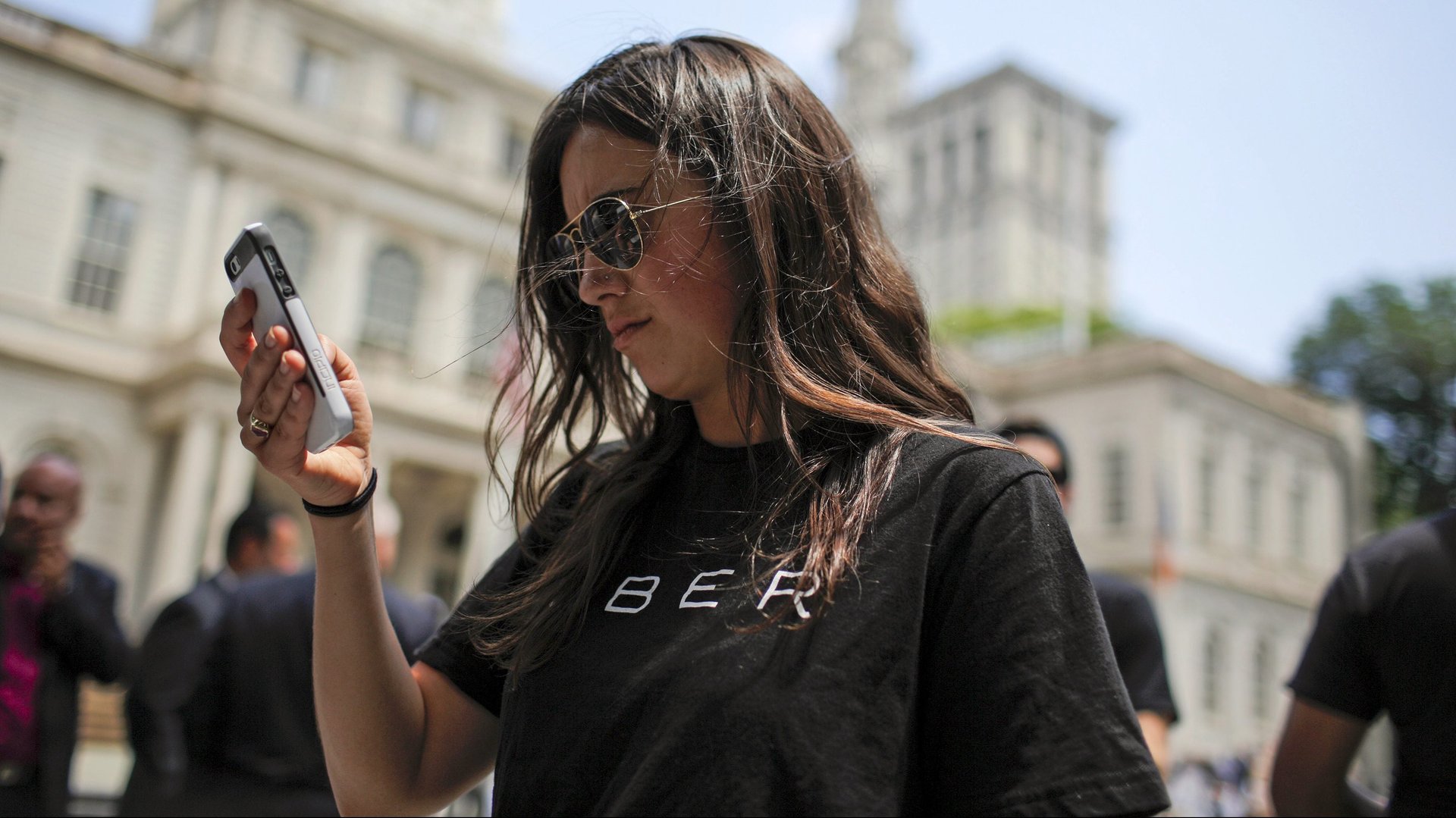There’s still one thing people like about Uber
The latest Uber headlines are straight out of a TV drama. Recode: “A top Uber executive, who obtained the medical records of a customer who was a rape victim, is fired.” CNBC, citing subscription-only tech news site The Information: “Uber reportedly used an algorithm to pay new hires less—reinforcing a gender pay gap.”


The latest Uber headlines are straight out of a TV drama. Recode: “A top Uber executive, who obtained the medical records of a customer who was a rape victim, is fired.” CNBC, citing subscription-only tech news site The Information: “Uber reportedly used an algorithm to pay new hires less—reinforcing a gender pay gap.”
The facts in the stories are worse. Recode reported June 7 that Eric Alexander, president of Uber’s Asia Pacific business, obtained the medical records of a 26-year-old woman who was raped and assaulted by her driver in New Dehli in December 2014, and then showed them to Uber CEO Travis Kalanick and senior vice president Emil Michael. The executives reportedly used the records to consider the possibility that the woman’s account of being raped—for which her assailant was ultimately sentenced to life in prison—simply wasn’t true.
The Information reported (paywall) that Uber in mid-2015 approved an algorithm-powered compensation system that “aimed to persuade candidates to accept the lowest possible offers.” The so-called “market of one” method disproportionately disadvantaged women, who typically make less than men in similar jobs. “You’re saying women systematically exist in a market of lower pay” a person familiar with the compensation algorithm told The Information.
The stories would defy credulity if they weren’t about Uber, a company whose first half of 2017 seems better suited to fiction than reality. The scandals that started in February with a blog post about sexual harassment have multiplied and now threaten to consume every part of the company. The culture is toxic, the leadership in disarray. Uber is facing one federal probe over software used to deceive regulators and possibly another over a former employee’s theft of trade secrets from self-driving car maker Waymo. On June 6, Uber fired 20 people and issued written warnings to seven more as the result of an investigation by law firm Perkins Coies into 215 specific complaints of misconduct. (Alexander wasn’t among those 20, but he was dismissed following the Recode report.) The results of a second investigation, conducted by former US attorney general Eric Holder, are due out next week.
Despite all of it, there is one thing people still like about Uber: its service.
In late March, Uber said it had its best week of ridership ever. Uber’s US sales were up more than 30% since the start of the year, according to data from Second Measure, a research firm that analyzes anonymized credit card purchases from millions of US consumers. Its customer ranks have grown by 15% and its average transaction value by about 10% over that same period, according to Second Measure.
There is no shortage of reasons to hate Uber as a company. But the service is so fast and convenient and accessible that, for many Americans, those things have yet to stop them booking rides. Sure, a reported half million people deleted their Uber accounts—or tried to—in early February, after the company was perceived to be in support of US president Donald Trump’s “Muslim ban.” But even that show of consumer activism is a blip.
Uber has been caught doing a lot of bad things and before the year is over (or maybe even the week!) may be caught doing more. Before Susan Fowler’s February blog post, Uber had been shown to have sabotaged competitors, evaded law enforcement, scorned regulators, and burned political bridges in too many cities to count. Uber continues to bleed money, posting a loss of $708 million in the first quarter of this year. That was still slightly better than the staggering $991 million it lost in the three months prior. Gautam Gupta, Uber’s finance chief, plans to depart in July.
But none of that—none!—changes what consumers see when they pull out their phones and open the Uber app.
What they see is a simple screen with a pulsing blue dot and a box that reads “where to?” When they enter a destination, they get an immediate estimate of how long it will take to reach that spot, and how much it will cost. They can flip between different ride options—shared or private, economy or premium—and see how far away their driver is.
Uber has liberated city dwellers from the tyranny of taxis. Despite years of bad behavior and months of scandal, a lot of people keep coming back. It’s getting hard to fathom what could possibly change that.